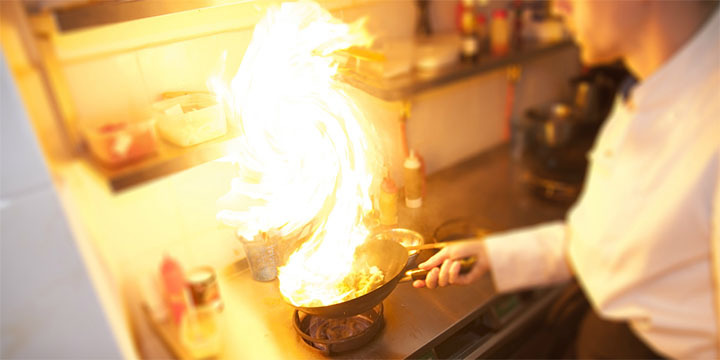Haha I’m gonna sit here and scrape some crust or get all the oil perfectly gone? No, not a chance. I know who put the oil there. I did. It’s simple.
Haha I’m gonna sit here and scrape some crust or get all the oil perfectly gone? No, not a chance. I know who put the oil there. I did. It’s simple.
I always thought “westerners over clean their pans” was an exaggeration until I moved out of home.
Me: Wok gets used, I gently scrub it with a bamboo wok brush thing (google it) under running water, done. No detergent or soap.
Housemate: soaks the pan for an hour, scrubs it with like 30mLs of dishwashing liquid then puts it in the dishwasher.
Like that can’t be good for the environment. I used like 250mL of warm water, he used like 10 litres combined soaking, rinsing and running a dishwasher.
For reference, I made like a day’s worth of fried rice and stir fry.
He made one (1) meal, breakfast, and only 2 things were on that pan: bacon & eggs
???
That is excessive, but more reflective of being poorly trained than a western culture.
I mean he did hit the bong after breakfast so soaking may have been just him leaving it in water for longer than he anticipated.
Still I do this. Takes less than 60 seconds. No detergent or dishwasher involved, no soaking.
I’ve had roommates. Letting something soak is the lie they tell when they’re leaving it for someone else. Nothing needs to be soaked if you don’t suck at cooking/washing up
Well if you have stuff stuck to a pot or pan that can’t go in the dishwasher, it does help to soak for a couple minutes (not overnight tho lol)
I hand wash my pots and pans. Dishwasher is for plates, glasses and cutlery
I buy old cast iron pans, lovingly cared for and seasoned for generations, to put into the dishwasher with a GoPro to get rage clicks on the internet
Excellent video! No stuck on food, dryed, seasoned, and done!
I found a YouTube link in your comment. Here are links to the same video on alternative frontends that protect your privacy:
counterpoint: being poorly trained is a hallmark of western culture
Angloids certainly don’t clean any dishes properly. The things I’ve seen on glasses, cups, etc.
Getting a woke was the thing that changed this for me actually.
The downside is having to find houses with gas stoves, which is apparently harder than anticipated in Southern Racist Island
I don’t know if such a thing exists but induction transfers heat much more effectively and there is no reason you couldn’t structure the coils in such a way that the coupling strength mapped to the gradient one experiences cooking on a gas stove.
I have been meaning to find/build such a thing for a while. Either through contouring like a heating mantle or using something like copper heat pipes as an intermediate stage between an induction plate and the wok plus a magnet to override the frustrating interlock.
The only induction burners at my work (western restaurant) kitchen are for a bain-marie or to aid with sous-vide, so I’m not too familiar.
But from what I gather, the issue becomes maintaining heat. Wok stir frying requires rapidly throwing in many cold ingredients in rapid succession and having them all cook without turning into a soggy mess. However, throwing in cold ingredients which cools the wok. But if you were serious and got an attachment to concentrate the flame at the bottom which rapidly returns them to the previous temperature. I don’t think an induction burner can return to top temp that rapidly. Also you can’t flambé your 料酒/cooking spirit as easily.
On a commercial setting… Well, commercial wok burners require constant water cooling because if you don’t, the metal warps from constant 400°C/750°F+ temperatures. While you can water cool electronics, something that takes as much abuse as a stove might not want to have running water that close to electrical components.
Induction stoves typically have much functional higher heat output than gas at least in a home setting, they also don’t need much cooling since the coil itself doesn’t heat much. It always dominates in water boiling etc tests.
A gas stove heats the air/plasma a lot of which is carried away by convection, you can’t hold your face above a gas burner cranked to max but it wont even feel warm above an induction stove at max (until the pot is hot of course and convecting that way). An induction stove heats basically directly opposite the coil, the reason they have magnetic interlocks is because if they are on and you move a ringed finger over the stove it will almost immediately amputate the finger as ~2 kW are dumped into like 10 grams of metal. Idk if you’ve ever seen induction forging but you can heat metal at insane speeds using induction. I have cracked cast iron by throwing it straight on my shitty cheap induction stove at max power.
Yeah I understand the mechanism and science behind induction, but specifically to woks: the wok doesn’t stay still.
Excess/“wasted” heat from a gas stove is a flaw that has been explicitly flipped to the advantage of wok cooking. There’s a reason why the wok is shaped like that and wok stoves are shaped like that.
This is actually a bad thing for cooking with woks. Woks don’t sit flat and just shake back and forth, woks don’t sit still while you use a utensils to move the food back and forth. The wok moves and won’t stay in contact with the induction burner. There’s a Y axis involved. The wok moves upwards, not going to be in constant contact with an electric stove.
This helps impart 镬气, the instantaneous caramelisation of sugars that adds a smoky flavour that you literally cannot recreate by moving ingredients a stationary pan with a wooden spoon or spatula. Wok hei/Huò qì
An instantaneous burst of heat over 1000°C/1800°F followed by rapid cooling from being airborne.
Ah interesting! of course.
Then I’m back to my idea of something like a laboratory heating mantle that stays attached to the wok during cooking. Weight might be a problem though. Kinda defeats the simplicity of a wok if it’s riding on some weight assisting mechanism :p
Someone needs to solve this because gas is on the way out one way or the other. Portable burners might be used by enthusiasts in areas without infrastructure or with bans on installations but they’re not really a long term solution.
Before natural gas my people used a whole lot of wood.
But if that’s not going to be the case, I hear hydrogen is flammable and can be created by putting a current through water. Doesn’t even release carbon upon burning. So electric with an extra step?
China has nuclear power so using electricity to generate hydrogen to burn instead of LPG/Butane/Propane/Acetylene might be more carbon friendly if technology is invested. Methane is also a renewable flammable gas but the downside is it’s not odourless.
I found a YouTube link in your comment. Here are links to the same video on alternative frontends that protect your privacy: